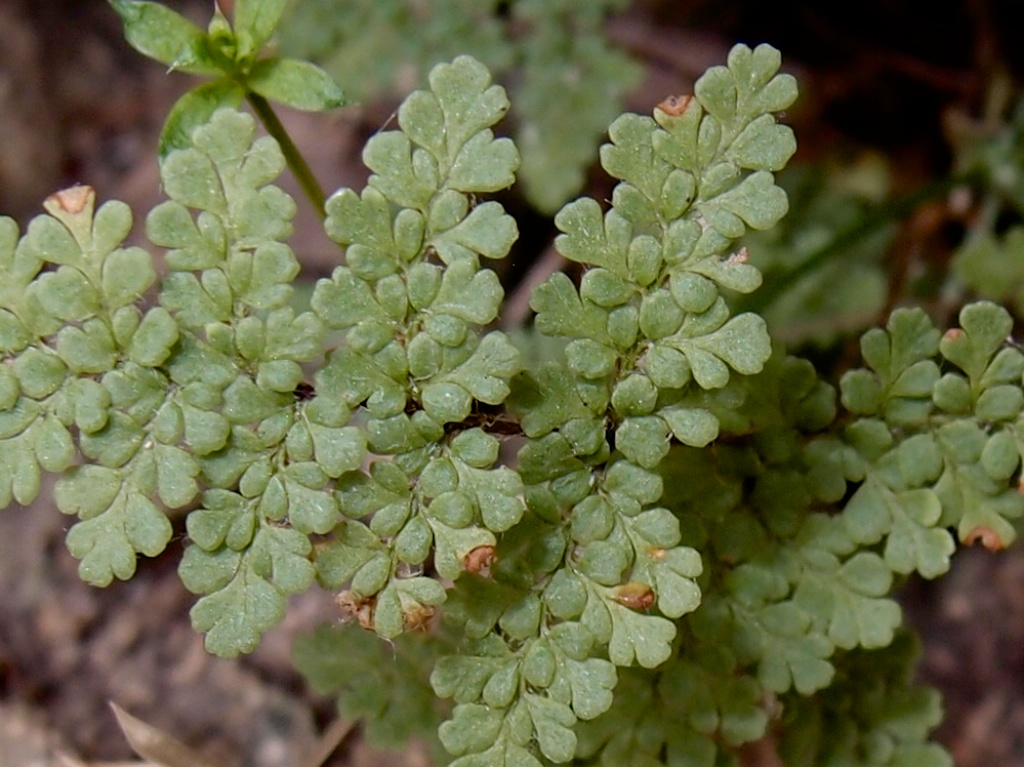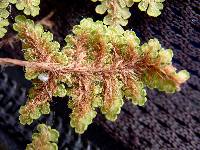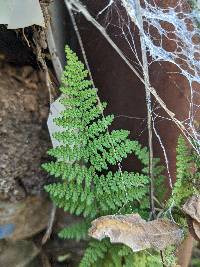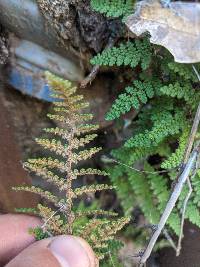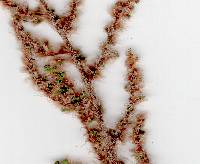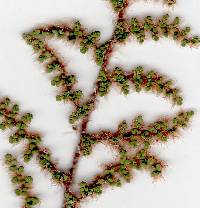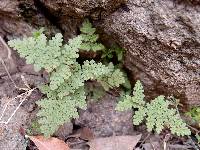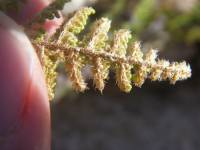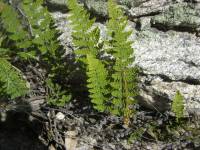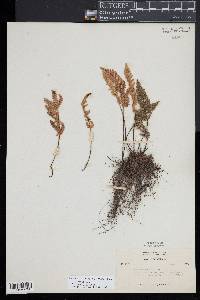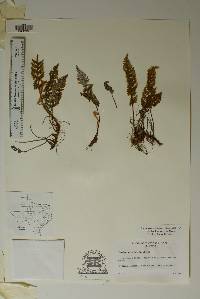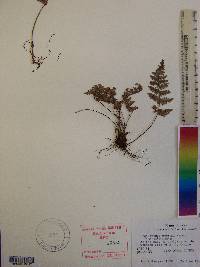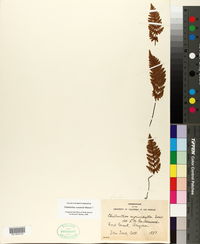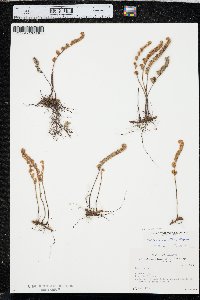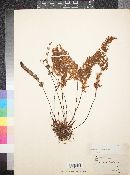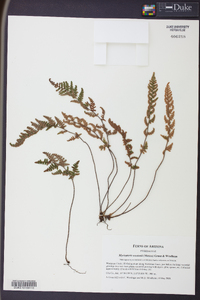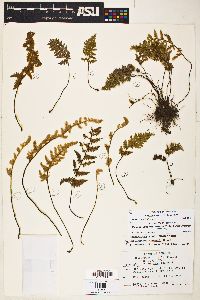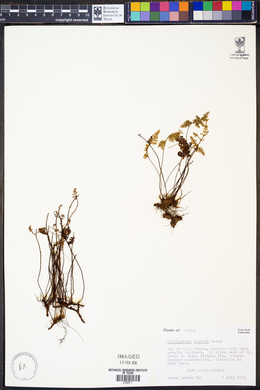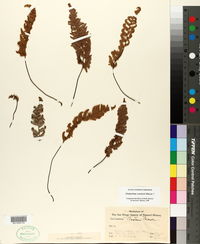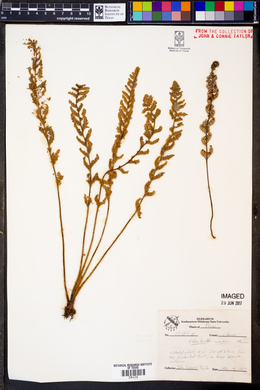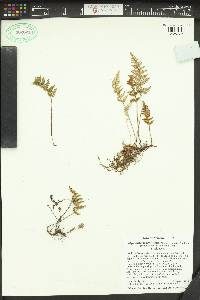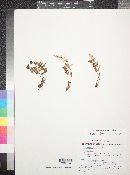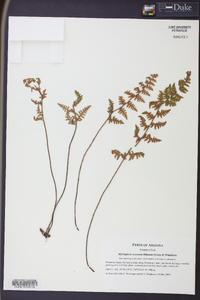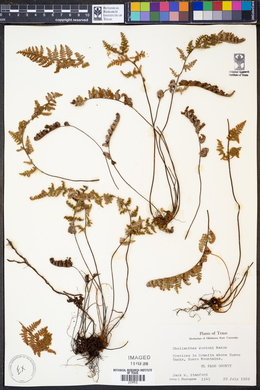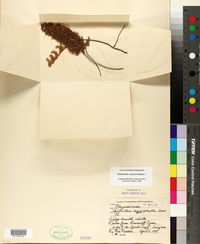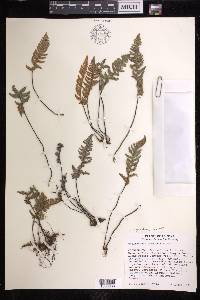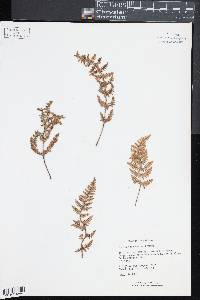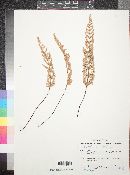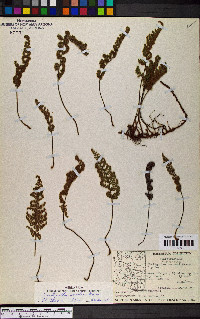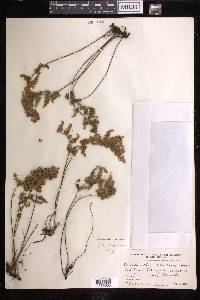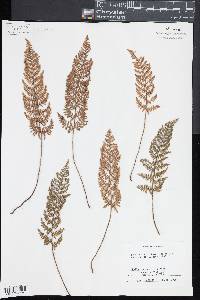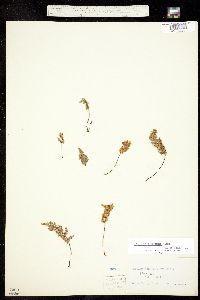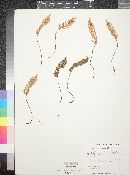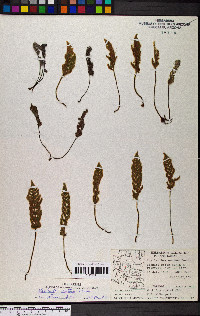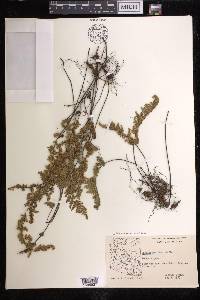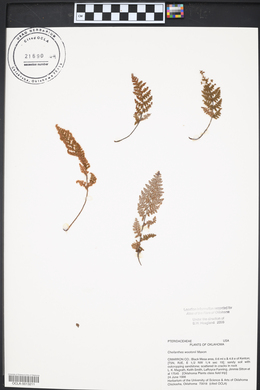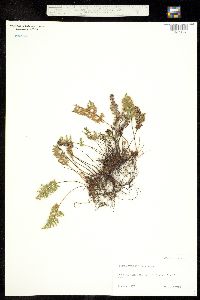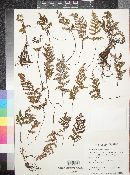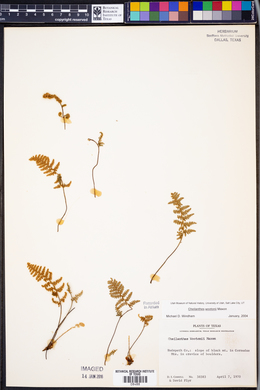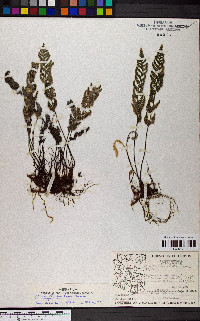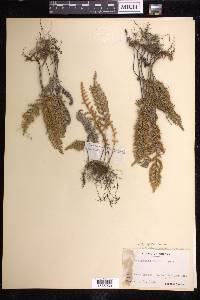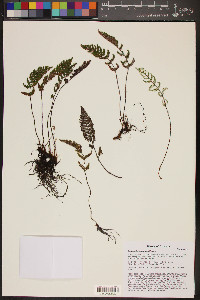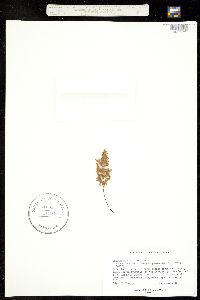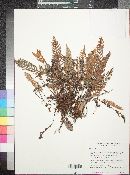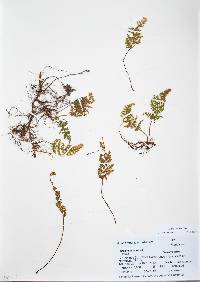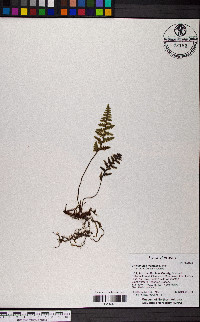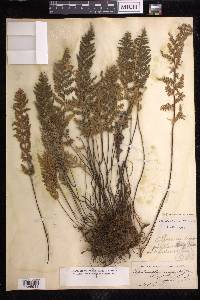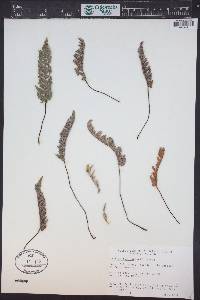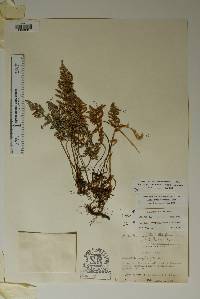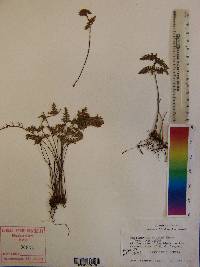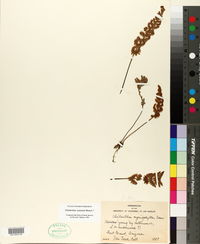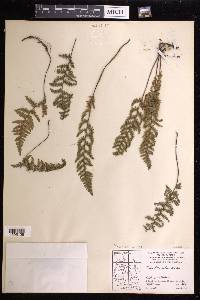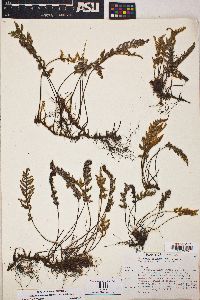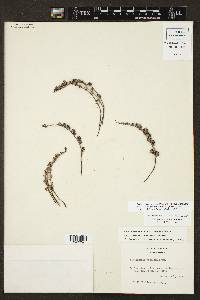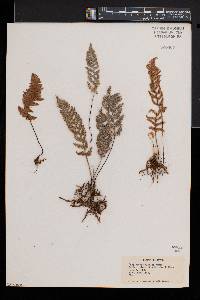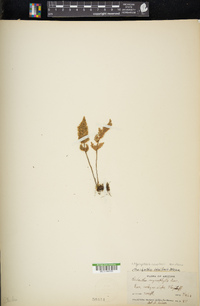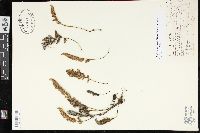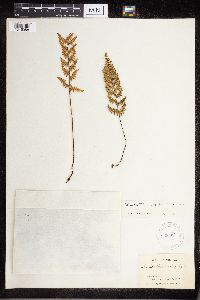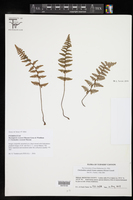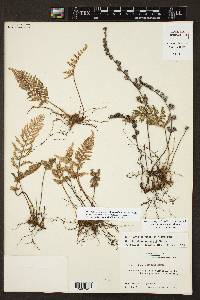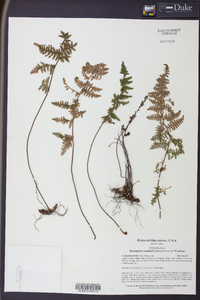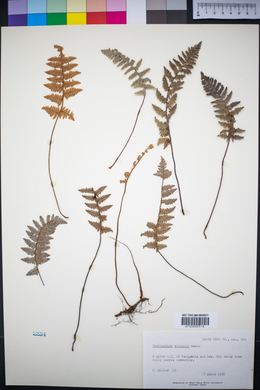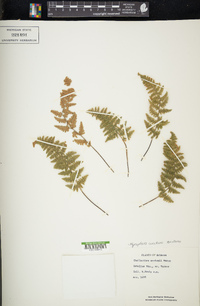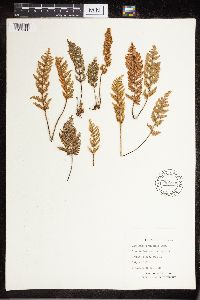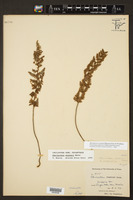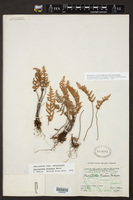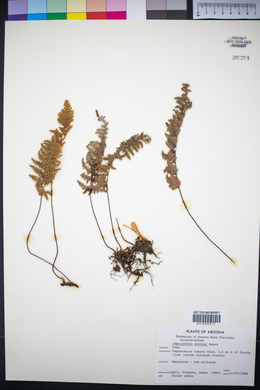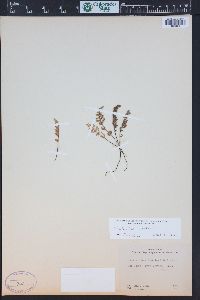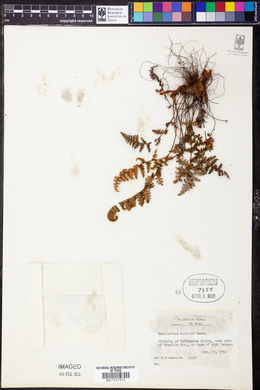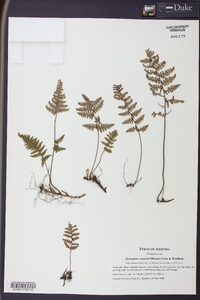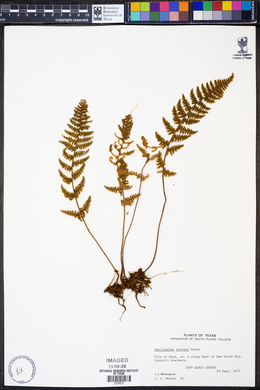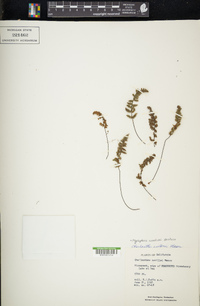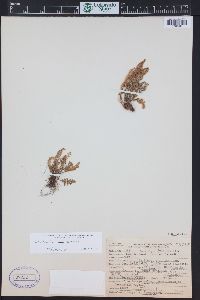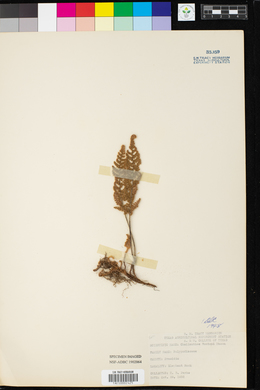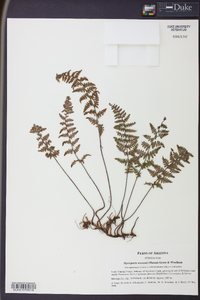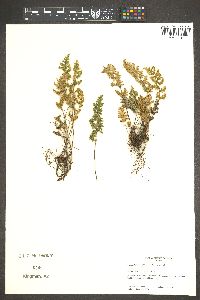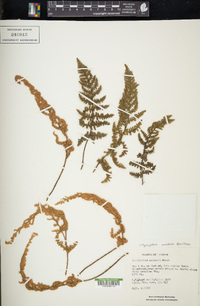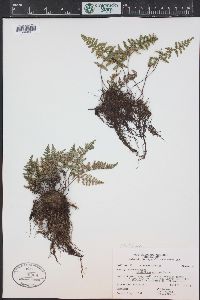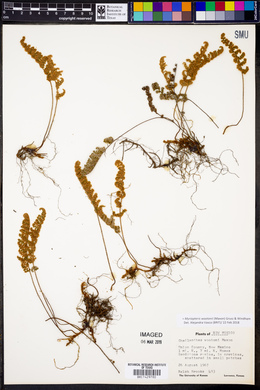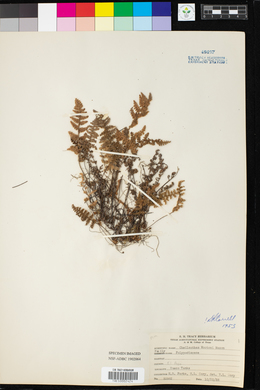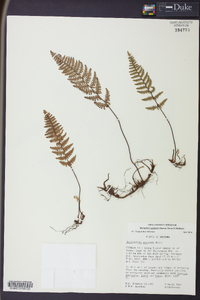Myriopteris wootonii
|
|
|
|
Family: Pteridaceae
Beaded Lip Fern, more...beaded lipfern, wooton lipfern, beaded lipfern (es: helecho)
[Cheilanthes wootoni Maxon, moreCheilanthes wootonii Maxon] |
Stems long-creeping, 1--3 mm diam.; scales uniformly brown or weakly bicolored with poorly defined, dark, central stripe, lanceolate-ovate, straight to slightly contorted, loosely appressed, often deciduous on older portions of stem. Leaves scattered, 7--35 cm; vernation noncircinate. Petiole usually dark brown, rounded adaxially. Blade oblong-lanceolate, 3--4-pinnate at base, 2--5 cm wide; rachis rounded adaxially, with scattered linear-lanceolate scales and sparse monomorphic pubescence. Pinnae not articulate, dark color of stalk continuing into pinna base, basal pair not conspicuously larger than adjacent pair, usually equilateral, appearing glabrous adaxially. Costae green adaxially for most of length; abaxial scales multiseriate, lanceolate-ovate, truncate or subcordate at base, without overlapping basal lobes, conspicuous, the largest 0.4--0.8 mm wide, strongly imbricate, often concealing ultimate segments, ciliate, with coarse cilia often confined to proximal 1/2. Ultimate segments round to oblong, beadlike, the largest 1--3 mm, abaxially glabrous or with a few small scales near base, adaxially glabrous. False indusia marginal, weakly differentiated, 0.05--0.25 mm wide. Sori ± continuous around segment margins. Sporangia containing 32 spores. n = 2 n = 90, apogamous. Sporulating summer--fall. Rocky slopes and ledges, usually on igneous substrates; 800--2900 m; Ariz., Calif., Colo., Nev., N.Mex., Okla., Tex., Utah; n Mexico. Like its close relative Cheilanthes lindheimeri , C . wootonii is an apogamous triploid of unknown parentage. With the recognition of C . yavapensis as a distinct species, the name C . wootonii is restricted to populations with leaf blades that appear glabrous adaxially, costal scales that are often ciliate only in the proximal half, and stem scales that are usually brown and loosely appressed. In addition, C. wootonii is distinguished from C. yavapensis by having smaller spores, averaging less than 62 µm in diameter. These characteristics can be subtle, and some specimens will be difficult to place in either C . wootonii or C . yavapensis . T. Reeves (1979) identified several specimens from Arizona that he hypothesized were hybrids between C . wootonii and C . fendleri .
FNA 1993, Allred and Ivey 2012, Grusz and Windham 2013, Martin and Hutchins 1980 Common Name: beaded lipfern Rarity: None General: Fern, to 35 cm tall, from slender, widely creeping rhizomes 1-3 mm in diameter; rhizomes densely covered with light reddish brown scales, these 2-3 mm long. Leaves: Fronds emerging singly from rhizomes, with one frond per 1-2 cm along the rhizome; petioles are dark brown, 5-20 cm long, covered with scales; blade oblong-lanceolate in outline, 2-5 cm wide, and 3-4 times pinnate; ultimate leaflets are round to oblong, 1-3 mm long or smaller and bead-like, glabrous, with a few small smales on the leaflet undersides. Sporangia: Sori (clusters of spore-cases) line the edge of the leaflets, protected by a false indusia formed by the curled-under edge of the leaflet. Ecology: Found on rocky slopes and along ledges, from 3,000-9,500 ft (914-2896 m); sporulating summer-fall. Distribution: se CA, s NV, and s UT, east through AZ and NM to se CO, w OK, and w TX; south to n MEX. Notes: Look for this plant under the name Cheilanthes wootonii, in texts and in the herbarium. Molecular evidence shows that species traditionally placed in the genus Cheilanthes are not all from a single evolutionary lineage, so botanists are in the process of splitting up the genus. The result is that most North American Cheilanthes are very recently placed in the genus Myriopteris. This species can be distinguished by the tiny bead-like leaflets appearing glabrous and green on the upper surface, and being covered with light brown scales on the lower surface; also the frond stalks are covered with brown scales which look a bit like hairs to the naked eye; use your hand lens to see the scales! When you dig it up, you'll see the fronds are often spaced out along the rhizome, not densely clustered and emerging from the same point. Ethnobotany: A cold infusion of the plant was applied to gunshot wounds; also used ceremonially as a Life Medicine. Etymology: Myriopteris is from the Greek words myrios, or myriad, and pteris, fern, because the frond is divided into so many leaflets; wootonii is named for American botanist Elmer Otis Wooton (1865-1945), former curator of the National Herbarium. Synonyms: Cheilanthes wootonii Editor: SBuckley 2010, AHazelton 2017 |
|
|
|

